Inspiration
For my final project this semester, I pursued wearable technology. For the functionality of the artifact I was first inspired by a collaboration with Levis and Google. Together, they designed a jacket for bicycle commuters that utilized conductive thread to recognize hand gestures. This meant you could control basic aspects of your phone just by touching your jacket.

Another interesting example of wearable technology is the company The Unseen. They developed apparel and accessories that changed colors based on environmental factors. In the following example, a bag changes color based on heat (hand prints).
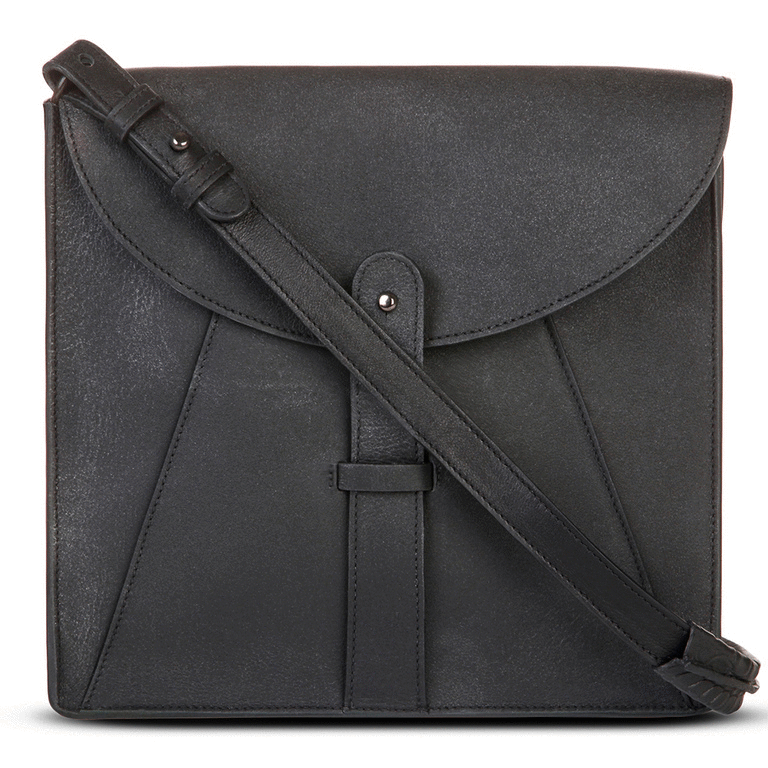
Both of the above examples are very interactive, which I wanted to replicate in my artifact. As for the aesthetics, I was inspired by the Instagram user interface. Therefore, I implemented a flat design aesthetic in my artifact. Flat design is common in graphic design and characterized by minimalism, color gradients, and borderlines [https://en.wikipedia.org/wiki/Flat_design]. The Instagram logo in particular is a great example of this aesthetic.
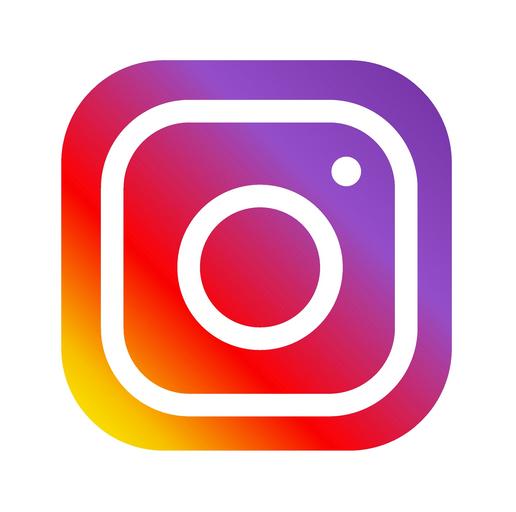
Specifications
I initially set out to create apparel that encouraged interaction. Given the recent COVID-19 pandemic, I decided to change scope to apparel that discouraged interaction (for the time being). While the goal is completely different, the engineering in many ways is the same, as well as the specifications. I originally intended to use the psychology of social media to encourage people to high-five and shake hands. This would be done through the use of bright colors and dynamic graphics.
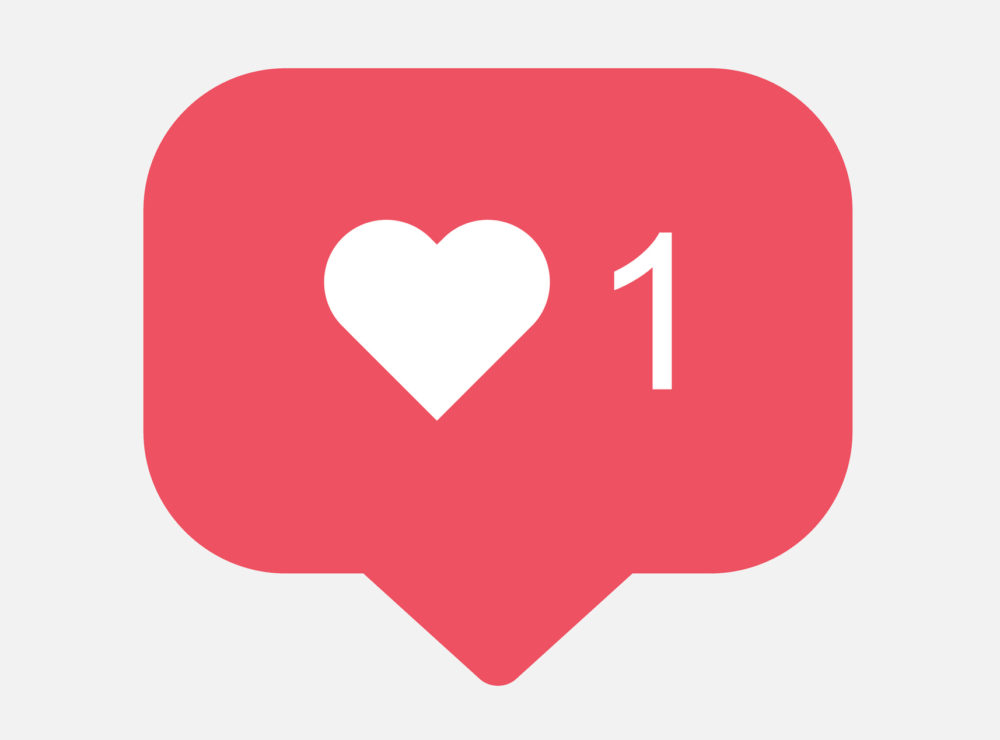
The same principles however, can be utilized to discourage behavior. This can be done through the use of harsh colors like red and startling patters such as fast blinking. Therefore, I developed the following functional and aesthetic specifications for my artifact.
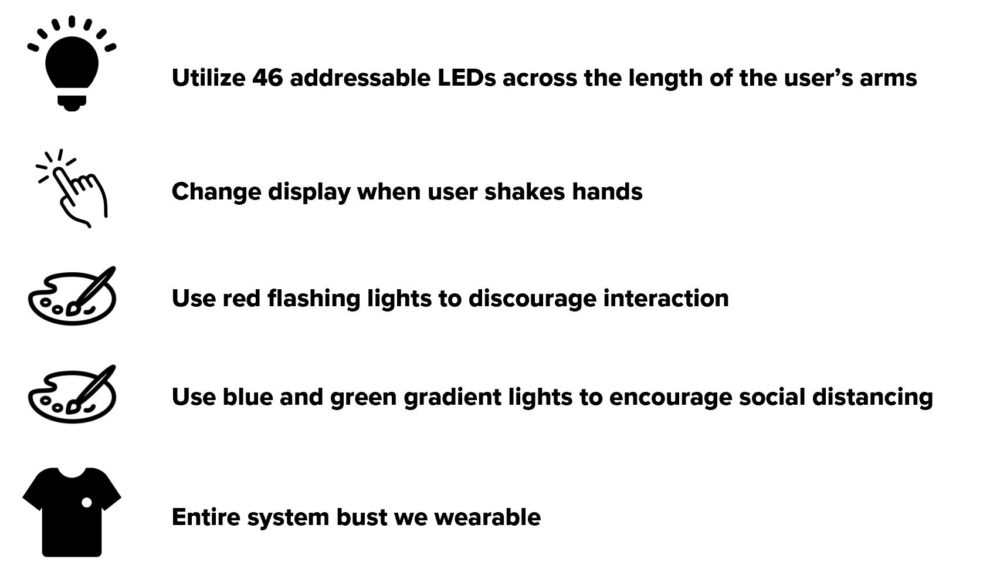
Initial Sketches
I initially aimed to utilize a white t-shirt as my base to better mimic the Instagram user interface.
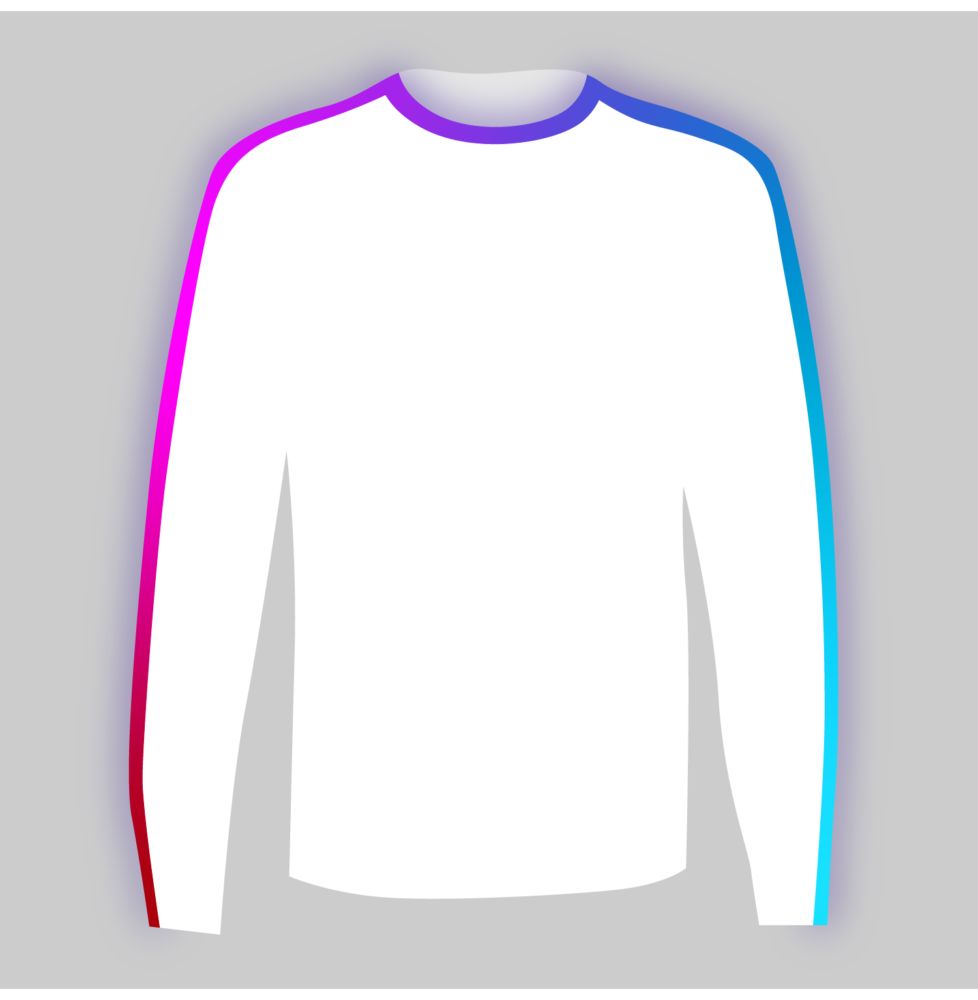
Yet, I realized that this didn’t provide ample contrast to the brightness of the light. I therefore transitioned to a black t-shirt as my base.
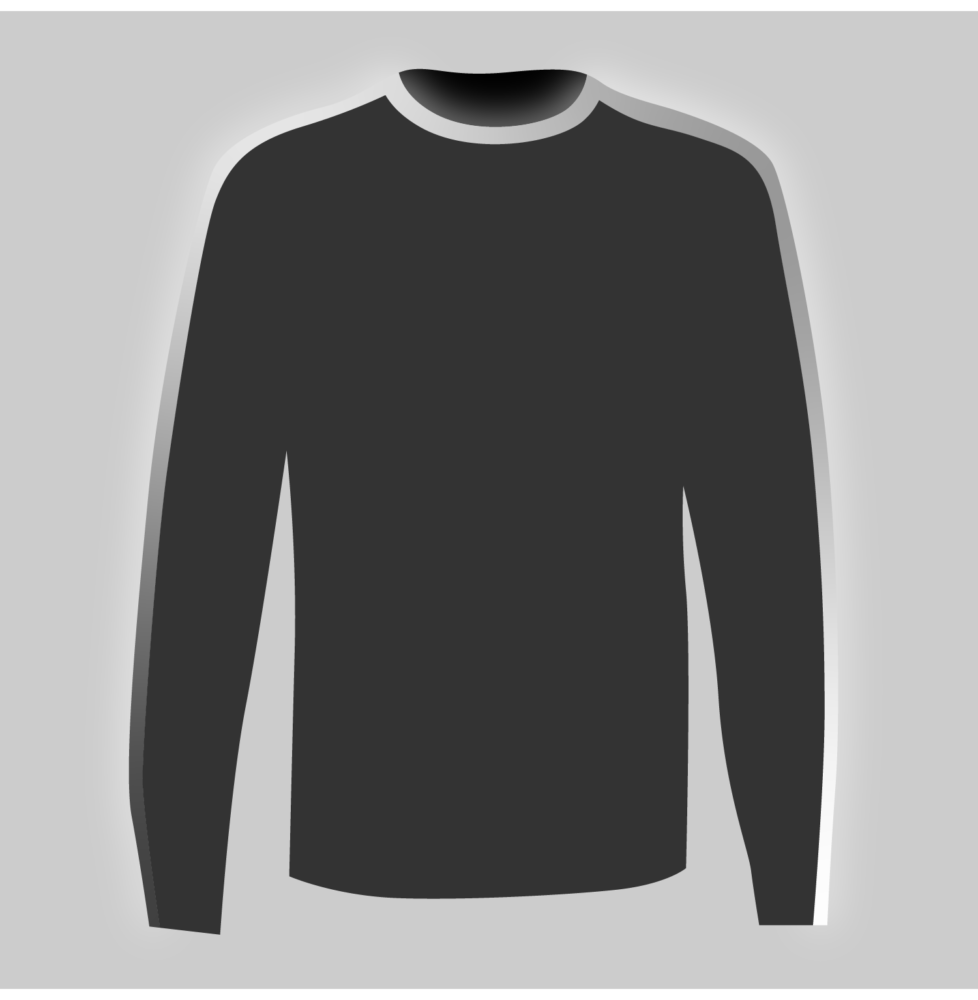
I also needed a place to hold the electronics. I felt this would be best placed on a glove. The glove would need to hold a microcontroller and a capacitive touch sensor. In the image below, the microcontroller is in blue and the capacitive touch sensor is in green.
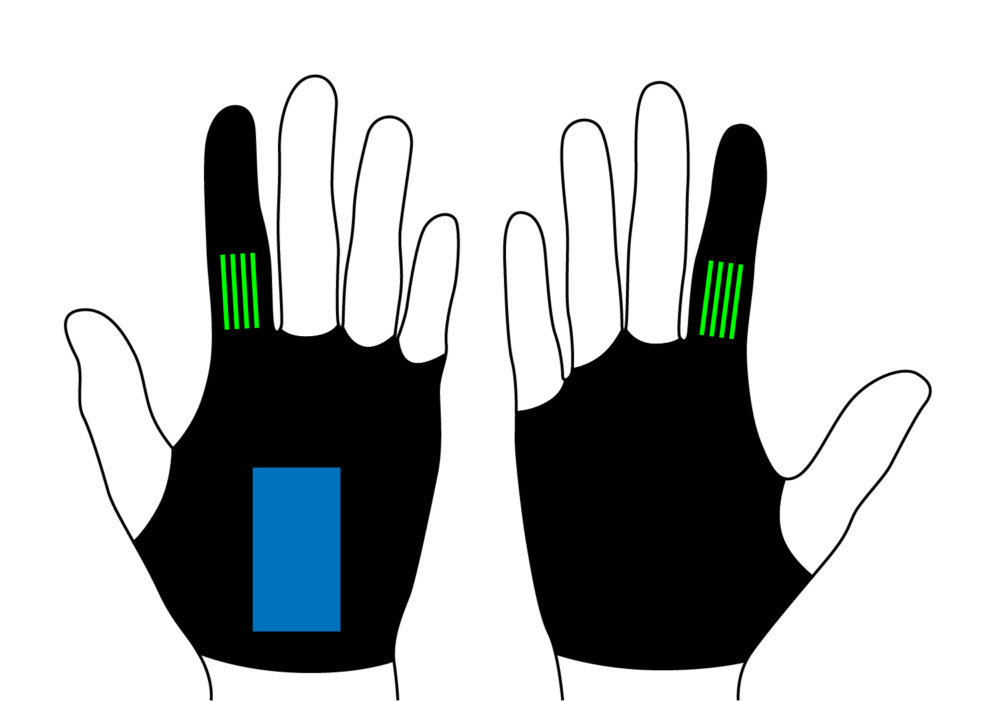
This allows for easy connection to the addressable LEDs on the sleeve as well as easy connection to the capacitive touch sensor.
Engineering
The most heavily engineered component of this project is the capactive touch sensor. The following schematic demonstrates their function.
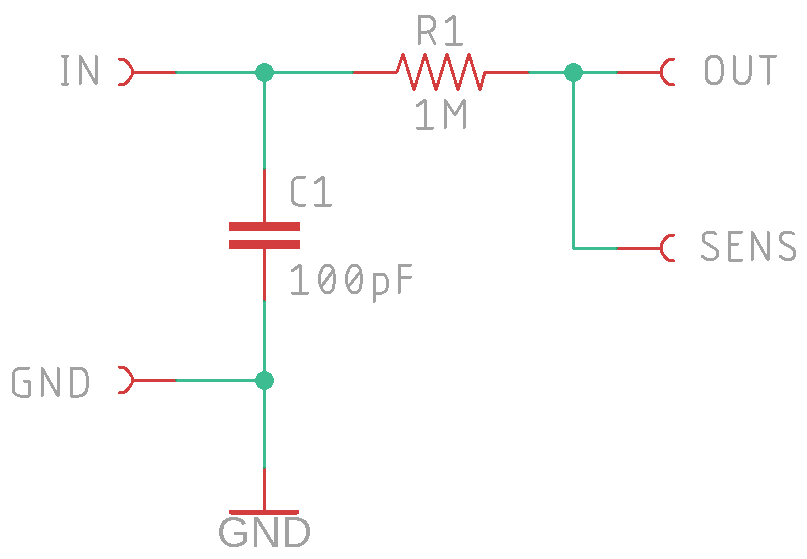
Furthermore, the LEDs I utilized operate in the following way.

While the data processing and programming may normally be complicated, it is made simple with the capacitiveSensor and neopixel library. The capacitive sensor library is able to measure changes in the RC circuit caused by human skin (increased capacitance). Even a thin layer of fabric minimized the impact of this RC circuit. The addressable LEDs only require 3 pins (power, ground, and data). The data pin can power each LED in the strip individually.
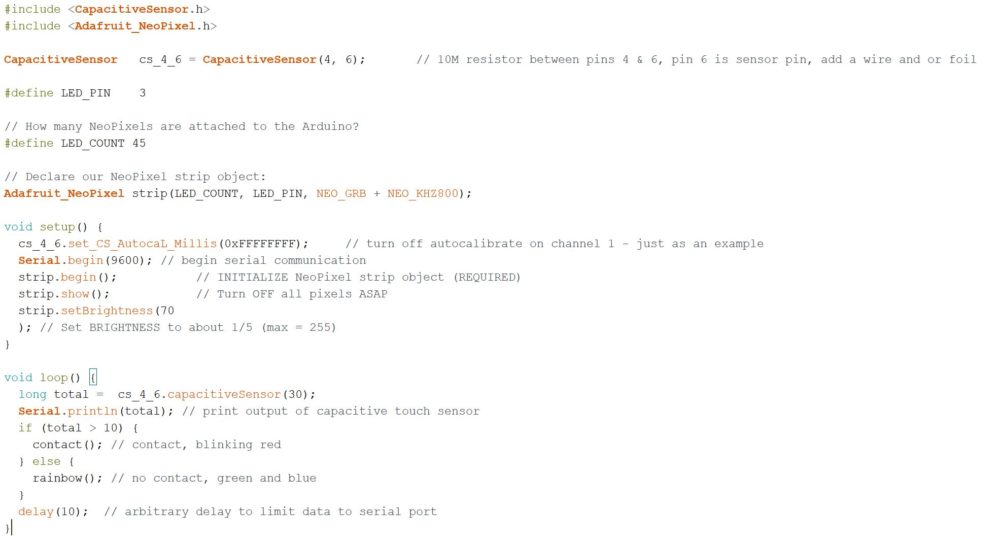
Final Artifact
The final artifact was made by wrapping the addressable LEDs in a thin fabric then sewing the fabric to a long sleeve t-shirt.
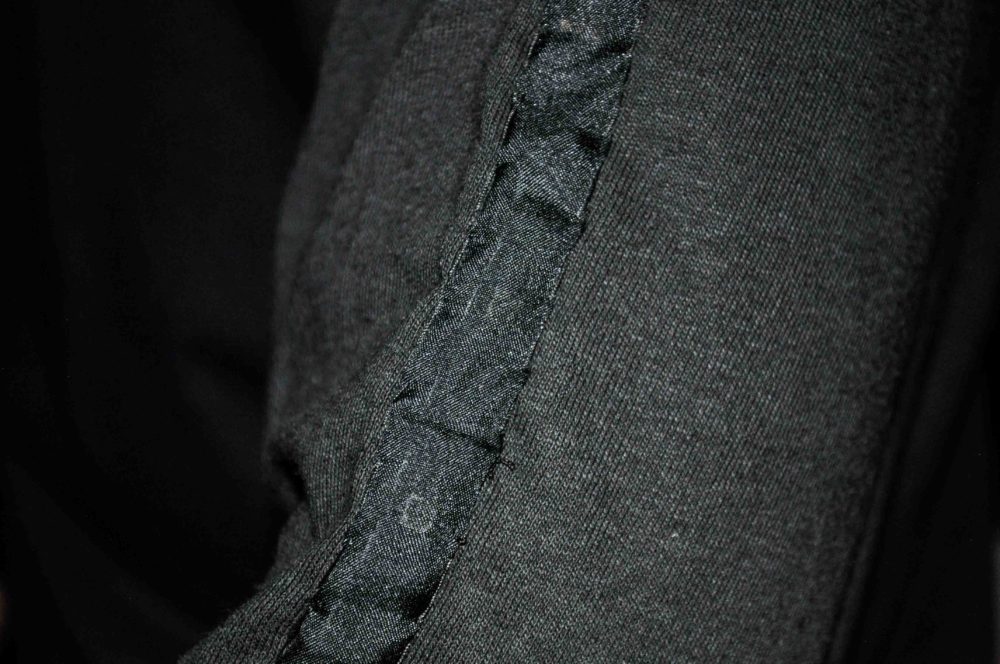
Aside from the LEDs, all the electronics are attached to glove using Velcro that has been sewed onto the glove.
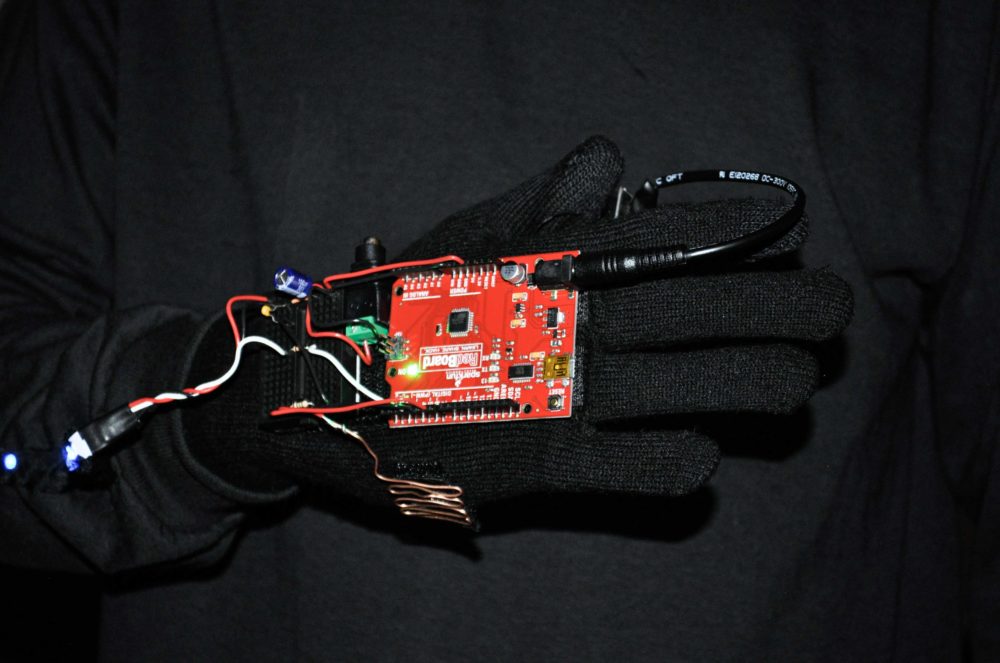
Putting it all together, the following video demonstrates the functionality of my final project. As can be seen, a startling red blinking light is activated when a touch is sensed.
Another interesting application of the shirt is long exposure photography. Here are two examples of pictures taken wearing the shirt.
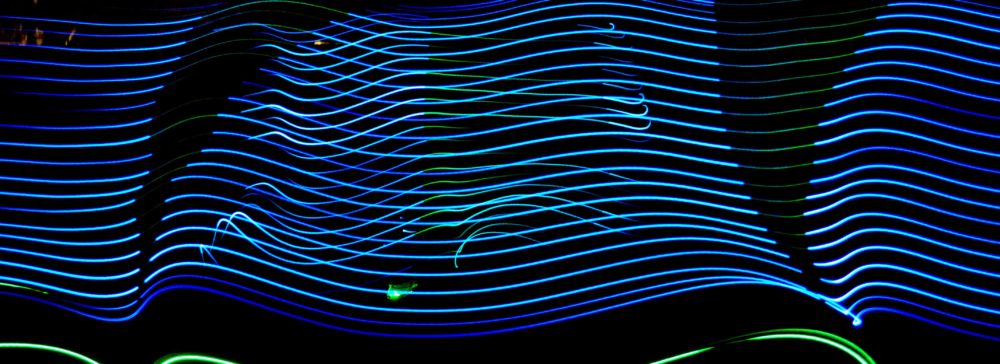
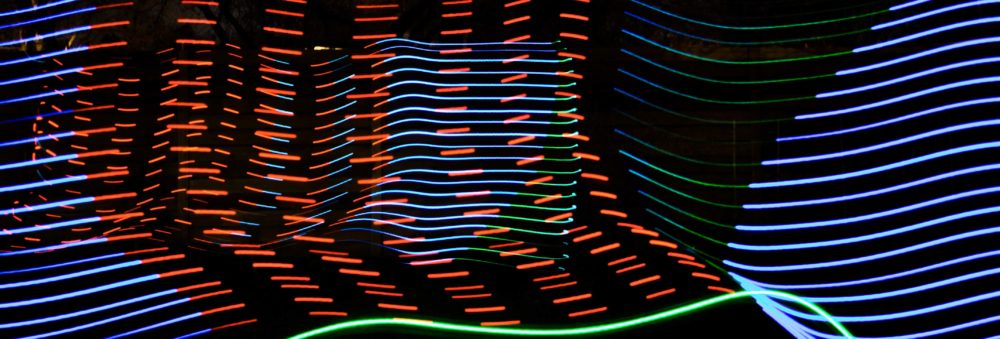

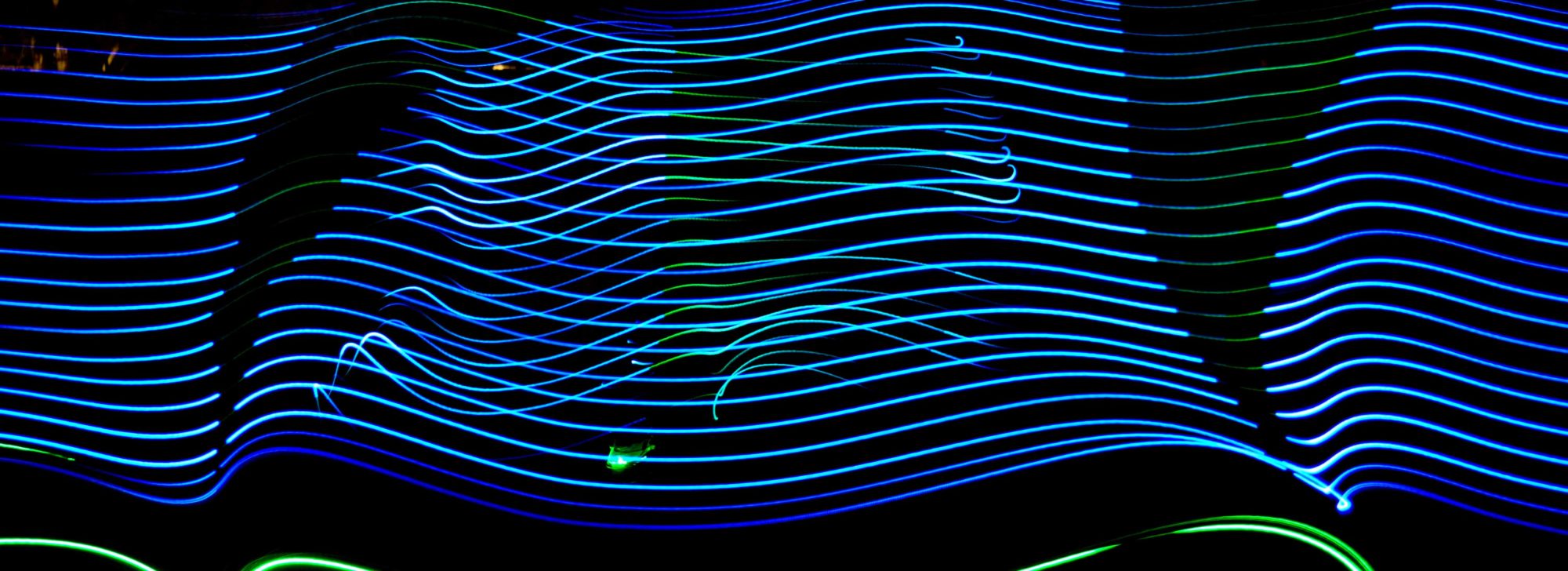
8 Comments. Leave new
Jackson-
This will be one of my in-depth critiques, following the professor’s critique format, I hope you find some of my feedback helpful and best of luck with the rest of the project with the time we have left, amidst the current events.
For statements of meaning: Very nice adjustment with regards to the current circumstances of COVID-19, especially in the case of making something that can benefit what is happening currently and completes a task in encouraging social distancing. The documentation behind your report is quite thorough, and I can appreciate the way in which you communicated your design and documented code.
Artist Asks Questions: Let me know if you have any specific questions.
Neutral Questions: Will you continue this project, into the summer (as this current virus seems like it’s going to stick around for awhile and a second wave is probable)? What alternatives do you have in regards to the glove removal? What’s the hardest part of this second post-COVID design process been?
Permission Opinion: If you would like to read it, then you are welcome to. Otherwise, you can stop reading my post now. I think your project would benefit from having a color gradient, to achieve a flat aesthetic.
Best.
-Will
Thanks for your comment Will! As for your neutral question, I do plan to continue with this project. As for the summer, my hope is to miniaturize the electronics to embed the entire system in the sleeve of the shirt. This would remove the need for the glove but the capacitive touch sensor would still be required. And as for your permissioned opinion, I completely agree. My goal was to have a gradient from blue to green but it wasn’t as clear as I would have liked given you could only see one side of the shirt. I would also like to add a material that would diffuse the light more efficiently.
Jackson, great pivot from developing a device to bring others together to one that encourages social distancing. I appreciate how well you communicated the electrical design as well as displaying your code. Great job prototyping this as well and overcoming those challenges with COVID-19; your prototype did a great job of proving the concept. Your long-exposure shots looked awesome! I do agree with your next steps and what others have said as well: finding a material to diffuse the light and create more of color gradient would be great. I think this would help achieve the flat aesthetic that Instagram incorporates. But, all in all, I was really impressed with your project.
Thanks Danny! I completely agree, I am currently looking for sewable materials that efficiently diffuse light.
Hey Jackson, this turned out so well! I really like how you pivoted with COVID-19! I personally don’t think you need to get rid of the gloves, but maybe you could imbed the electronics more/make them smaller and less obvious.
Thanks Fiona! My plan is to miniaturize the electronics over the summer with a custom PCB.
Jackson, I love how you changed scope and were actually able to accomplish this task. I think it is so cool that it not only works but that you found a secondary application with the exposure photography. Do you have plans to take this further? Any ideas on how to remove the need for gloves? Great job!
Thanks Jamie! I am hoping to continue this project over the summer. My main goals are to miniaturize the electronics and embed them in the sleeves (eliminating the need for the glove), and to program multiple types of interactions.